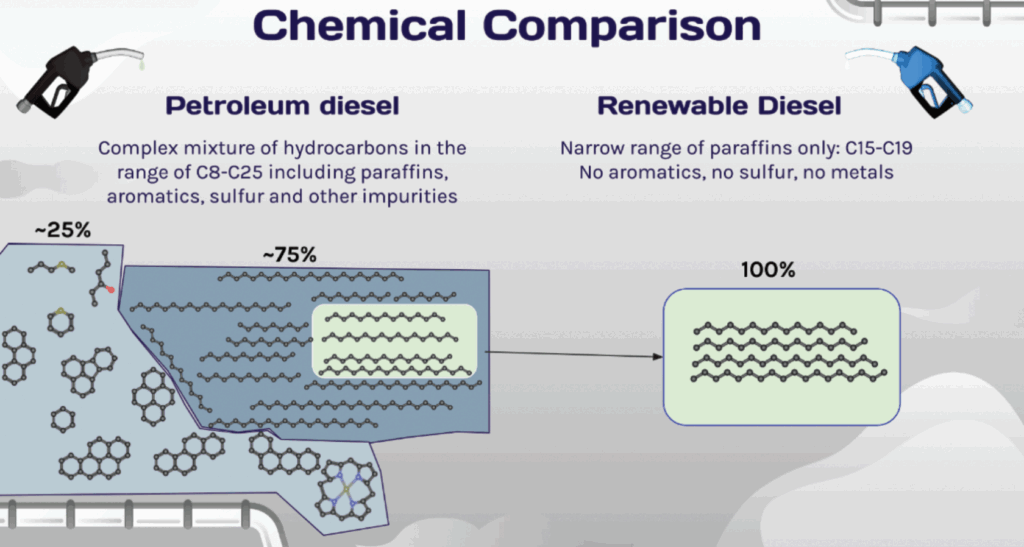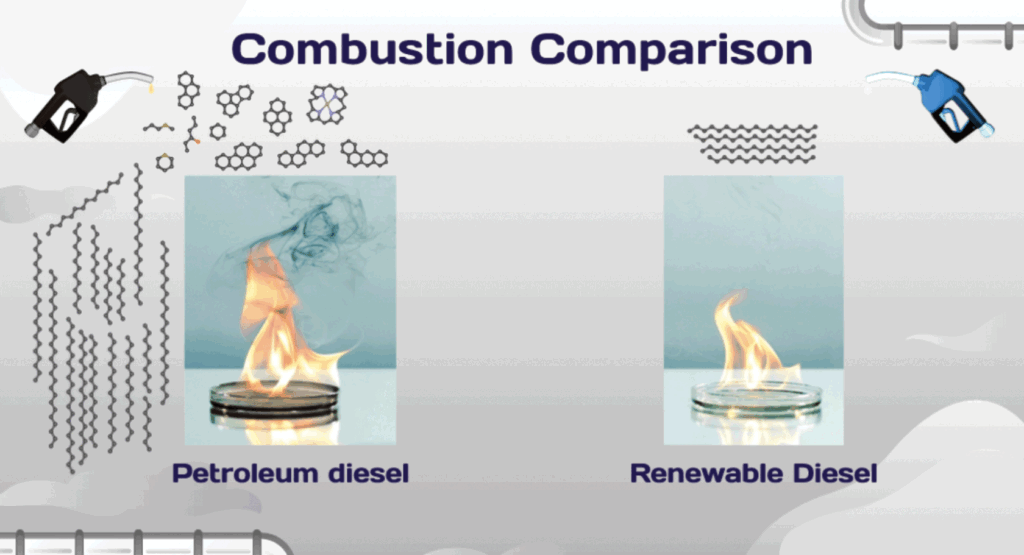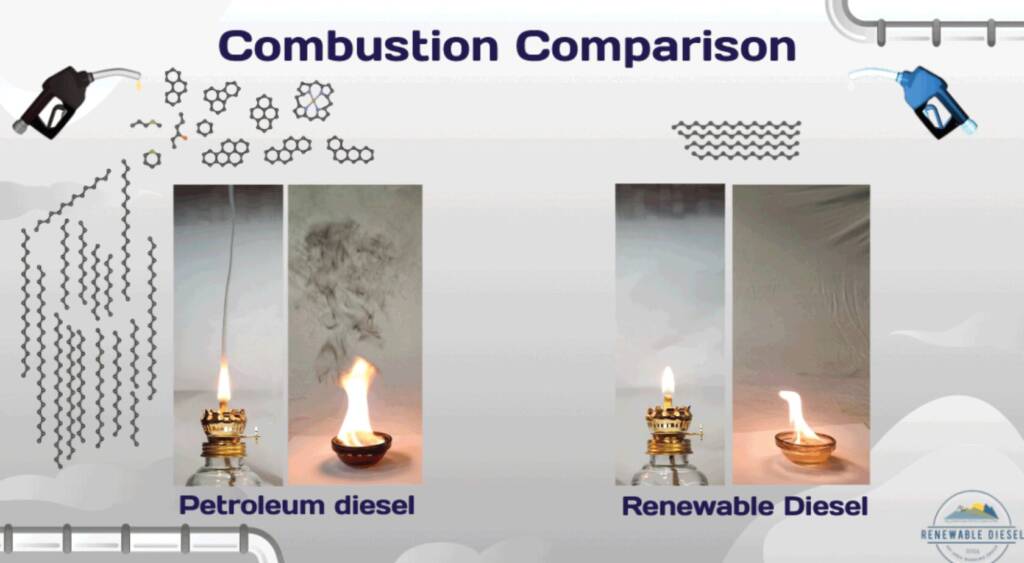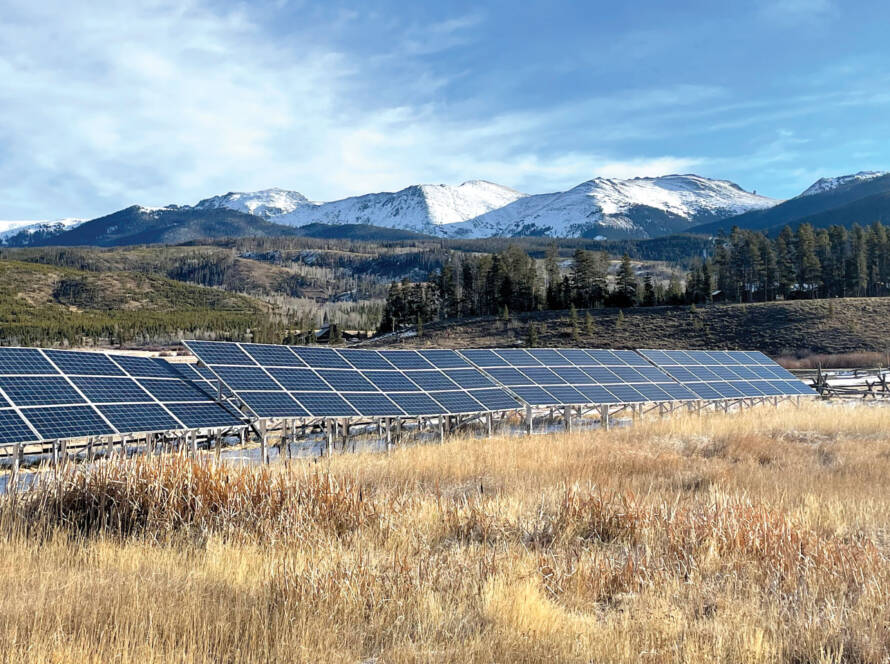As the benefits of renewable diesel become better known, the demand for this powerful and environmentally friendlier fuel continues to grow, especially in the recreation and snow sports industries.
Renewable diesel is made from fats and oils from animals and plants like soybean or canola oil. These fats and oils are processed in a refinery to become chemically identical to petroleum diesel.
Renewable diesel can be used as a substitute for traditional diesel fuel or blended with any amount of petroleum diesel. It is important to note that renewable diesel should not be confused with biodiesel, which is also made from fats and oils, but through a completely different process, resulting in different molecular structures. This difference limits the amount of renewable diesel that can be blended with petroleum diesel in newer engines and delivers a slightly lower energy content.
“In North America, diesel is defined by [the American Society for Testing and Materials] standards, and both petroleum and renewable diesel have to meet the same specifications, resulting in a drop-in fuel,” said Dr. Jesse Therien, Montana Project Manager at Yellowstone-Teton Clean Cities, covering Montana, Idaho, and Wyoming as part of the U.S. Department of Energy program supporting the displacement of petroleum use in transportation across the country.
Why choose renewable diesel
Environmental advantages
“Renewable diesel has about 75% fewer lifecycle carbon emissions than petroleum diesel, which is a blend of many different molecules and carbon chains – about 75% linear and branched hydrocarbons, 25% cyclic hydrocarbons, contaminants and metals, and that’s a toxic mix,” said Therien. “On the other hand, renewable diesel is basically 100% linear and branched hydrocarbons, a very fine subset of those petroleum molecules, a small, purified sliver of petroleum diesel.
“Using renewable diesel in equipment is arguably one of the least expensive ways for ski resorts to reduce carbon emissions immediately. They might be excited to bring electric snow groomers and electric vehicles into their fleet, but considering the effect producing that electricity might ultimately have on the environment, in some cases, renewable diesel can deliver much more carbon reductions.”

Because renewable diesel can be blended with any amount of petroleum diesel without any engine modifications, using any percentage will help absorb some of the higher costs while delivering more climate action credits.
Fuel economy
Therien says that one of the key metrics when discussing fuel is cetane, a rating used for diesel that indicates how completely the fuel ignites easily under pressure. The higher the cetane rating, the better the fuel burns in an engine.
“Petroleum diesel can be about 40 to 50 on the scale, and the specifications can be adjusted with additives; for example, a cetane booster can raise petroleum diesel about three points, but renewable diesel starts around 70 – way more than petroleum diesel could ever get close to no matter how much additive is used. This is a huge advantage because the higher the cetane, the better the fuel economy.”
Maintenance
In addition to reducing greenhouse gas emissions, renewable diesel brings further savings in time and money. Because of its high cetane metrics and cleaner chemical construction, cleaner burning means cleaner injectors. Also, particulate filters on petroleum diesel-burning equipment often get clogged, which is a big maintenance headache for any fleet manager and further reduced with renewable diesel.
Because renewable diesel is similar to petroleum diesel, it avoids algae growth problems with biodiesel fuels. Also, with fewer impurities and contaminants, renewable diesel provides more stability than petroleum diesel, meaning it stores better and lasts longer.
Cold weather operations
“Renewable diesel, like petroleum diesel, varies seasonally, by production facility location and by what feedstock is used,” said Therien. “Fuel made from animal fat will be unlike fuel made from pure canola oil, or maybe there will be a blend of ingredients. Where fuel is coming from determines the most effective blend for cold weather, and that is worked out with the fuel distributor.”

Therien says that petroleum diesel fuel winter additives don’t work on renewable diesel because they are designed to work on impurities not present in renewable diesel.
“These additives will only work on the petroleum fraction of a blended fuel and therefore have a decreased overall effectiveness. Big Sky Resort in Montana tried to use 100% diesel last year, but it didn’t deliver great winter properties. There must be a backup plan. A blend with petroleum products will deliver the winter performance, but with fewer carbon emissions overall.”
Outdoor aesthetics
“The main benefit that users will notice is that since renewable diesel is such a pure and cleaner product, there is much less, if any, smell to the raw fuel. Because of that, when it combusts, emissions are significantly reduced. There will be little black soot, if any, with renewable diesel, testifying to its environmental performance,” Therien said.
Cost and availability
Accessibility depends on location. “If you’re not close to a refinery that’s willing to sell it locally, renewable diesel can be quite expensive,” said Therien. “Because of low carbon incentive legislation credits in California, Oregon, Washington, and British Columbia in Canada, producers benefit most by selling to those markets, making it easily available and priced almost the same as traditional diesel.
“Until recently, most renewable diesel had to be brought up from California or Texas, and this extra shipping cost has made it very difficult to acquire it elsewhere in the U.S. But it’s getting easier.

There are about 20 plants in operation throughout the U.S. and one in British Columbia, with more being built across both countries. A year ago, Canada implemented the clean fuel standard with mandates for renewable fuels, and currently, 13 other states in the U.S. are working on fuel standards, but so far, only New Mexico has passed the legislation.
“We need a government incentive to keep renewable diesel in the regions it’s produced to make it available and affordable. Ski resorts could get together, decide they want to use renewable diesel and collectively subsidize to get the same price.”
The time has come for ski resorts across North America to demand access to renewable diesel. Meanwhile, being willing to pay a slight premium today will immediately reduce carbon emissions and invest in future affordability and availability.
For further information, visit ytcleancities.org or check out one of their renewable diesel information sessions at youtube.com/watch?v=-uWUkkIJiD4.


